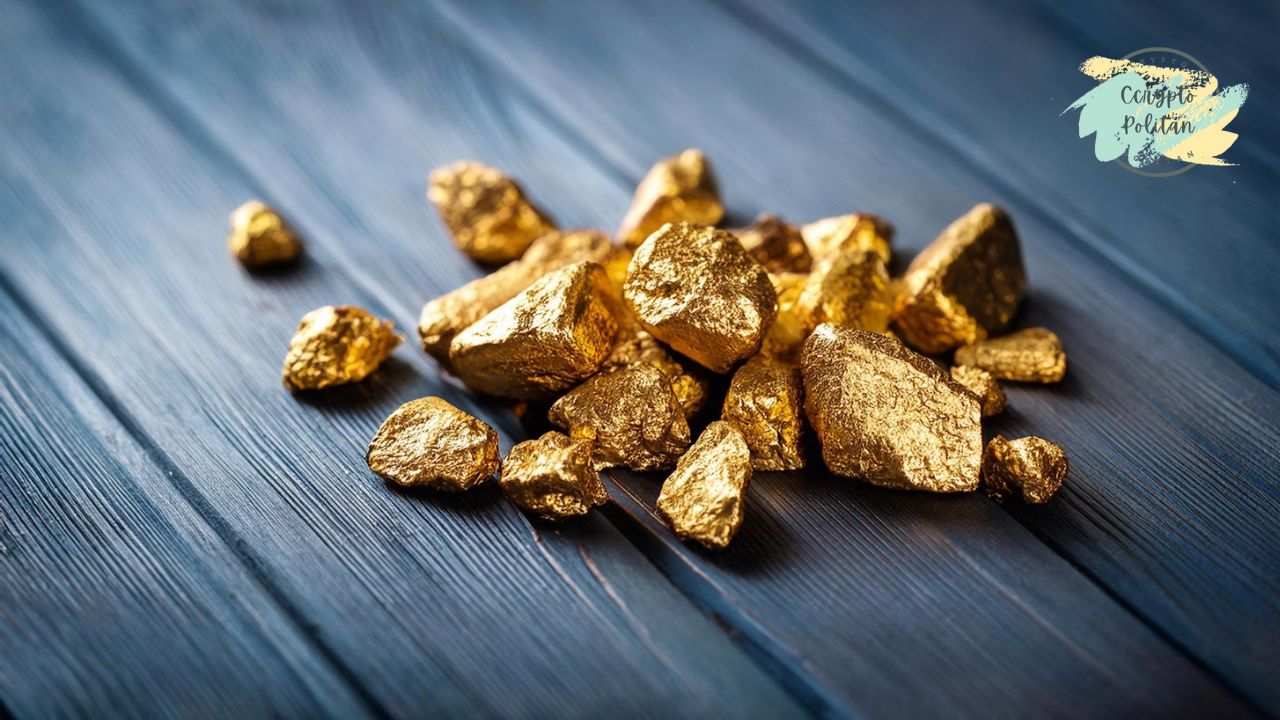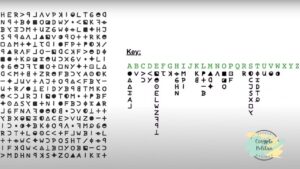The world of digital currency can feel like a thrilling, high-stakes frontier. For many, understanding fintechzoom.com crypto mining is the first step into this new digital gold rush. It’s a process that sounds complex, but with the right guidance, it becomes a fascinating journey into how cryptocurrencies are born and secured.
This guide will demystify the entire process. We will explore what crypto mining truly entails, breaking down the technology, the rewards, and the risks. Think of this as your personal map to navigate the exciting and sometimes turbulent waters of cryptocurrency mining. We’ll cover everything from the hardware you might need to the incredible software that powers it all, ensuring you feel confident and informed.
Understanding the Crypto Mining Landscape
At its core, crypto mining is the process by which new cryptocurrencies are created and new transactions are verified and added to a blockchain. Miners use powerful computers to solve complex mathematical problems. When they solve one, they get to add the next block to the blockchain and are rewarded with a certain amount of cryptocurrency.
This process is absolutely essential. It not only generates new coins but also secures the network, making it decentralized and resistant to fraud. Without miners, the entire system would collapse. The insights provided around fintechzoom.com crypto mining help to illuminate this critical function within the digital economy.
Crypto Mining at a Glance
To give you a quick overview, here’s a summary of what crypto mining involves, particularly when exploring resources like those discussed on Fintechzoom.
| Feature | Description | Importance | User Rating (General) |
|---|---|---|---|
| Concept | Solving cryptographic puzzles to validate transactions and create new coins. | Secures the network and generates new currency. | 4.5/5 |
| Hardware | GPUs, ASICs, or CPUs. The type depends on the specific cryptocurrency. | Determines mining efficiency and profitability. | 4.2/5 |
| Software | Programs that connect your hardware to the blockchain network. | Essential for directing your hardware’s power. | 4.6/5 |
| Mining Pools | Groups of miners combining their computational power to increase success. | Drastically improves the chances of earning rewards. | 4.8/5 |
| Profitability | Depends on hardware cost, electricity rates, and crypto value. | The ultimate goal for most miners; requires careful calculation. | 3.9/5 |
The Mechanics of Crypto Mining: How It Really Works
Let’s dive deeper into the nuts and bolts. Imagine a global, digital ledger called a blockchain. Every time someone sends or receives cryptocurrency, it’s recorded as a transaction. These transactions are bundled together into “blocks.”
Miners compete to be the first to solve a complex puzzle associated with a new block. This puzzle, known as a “proof-of-work,” requires immense computational power. The first miner to find the solution validates the transactions in the block, adds it to the chain, and receives the block reward. This is the essence of the fintechzoom.com crypto mining phenomenon.
Proof-of-Work (PoW) vs. Proof-of-Stake (PoS)
While Proof-of-Work is the original mining mechanism, another system called Proof-of-Stake (PoS) has gained enormous popularity.
The Energy-Intensive World of Proof-of-Work
Proof-of-Work is the powerhouse behind Bitcoin and many other early cryptocurrencies. It is incredibly secure because it forces miners to expend real-world resources (electricity and processing power) to participate. This makes attacking the network outrageously expensive and impractical.
However, this energy consumption is a significant downside. The amount of electricity used by Bitcoin mining alone is comparable to that of entire countries, leading to heated environmental debates. Discussions around fintechzoom.com crypto mining often weigh these powerful security benefits against the staggering energy costs.
The Efficient Alternative: Proof-of-Stake
Proof-of-Stake offers a more energy-efficient alternative. Instead of mining, participants “stake” their own coins to get a chance to validate transactions and create new blocks. The network selects a validator based on the size of their stake and other factors.
This method dramatically reduces energy consumption, as it doesn’t require solving pointless puzzles. Ethereum, the second-largest cryptocurrency, famously transitioned from PoW to PoS in an event known as “The Merge.” This shift highlights a broader industry trend towards sustainability, a topic frequently analyzed in fintechzoom.com crypto mining articles.
Getting Started: Your Crypto Mining Toolkit
Are you feeling the pull to start your own mining operation? It can be an incredibly rewarding venture, but you need the right tools for the job. Your success hinges on a combination of hardware, software, and a reliable power source.
Choosing Your Weapon: Mining Hardware
The hardware you choose is the single most important factor in your mining success. The days of mining Bitcoin on a standard laptop are long gone. Today, the landscape is dominated by specialized equipment.
CPUs (Central Processing Units)
The brain of any computer, a CPU can technically be used for mining some smaller, newer cryptocurrencies. However, for most established coins, CPU mining is simply not powerful enough to be profitable. It’s like trying to dig for gold with a spoon.
GPUs (Graphics Processing Units)
GPUs were the next evolution in mining. Originally designed for rendering graphics in video games, their architecture is perfectly suited for solving the repetitive calculations required in mining. For many altcoins (cryptocurrencies other than Bitcoin), GPU mining is still a viable and popular option. Miners often build “rigs” with multiple GPUs working in tandem. Many fintechzoom.com crypto mining guides provide detailed tutorials on building these powerful machines.
ASICs (Application-Specific Integrated Circuits)
ASICs are the undisputed champions of crypto mining. These devices are designed for one purpose and one purpose only: to mine a specific cryptocurrency algorithm at breathtaking speed. An ASIC miner for Bitcoin can only mine Bitcoin (or other coins using the same algorithm), but it does so with an efficiency that GPUs can’t even touch.
The development of ASICs created a massive shift in the mining world. While they offer incredible performance, they are also expensive and can become obsolete if a coin’s algorithm changes. This high-risk, high-reward dynamic is a central theme in many fintechzoom.com crypto mining discussions.
The Software: Connecting to the Network
Once you have your hardware, you need software to connect it to the blockchain. This software coordinates your hardware’s work, communicates with the mining pool, and reports your progress.
Popular mining software options include:
- CGMiner: A versatile and popular command-line miner that supports GPUs and ASICs.
- BFGMiner: Another powerful command-line miner known for its customization and device support.
- EasyMiner: A user-friendly option with a graphical interface, making it great for beginners.
Choosing the right software is crucial for optimizing your hardware’s performance. The fintechzoom.com crypto mining community often shares insights on which software pairs best with specific hardware setups.
The Power of Pools: Mining as a Team
For an individual miner, the chances of solving a block on a major network like Bitcoin are astronomically low. It could take years, or even decades, before you ever earn a reward. This is where mining pools come in.
A mining pool is a collective of miners who combine their computational resources, or “hash power.” By working together, the pool has a much higher chance of solving blocks regularly. When the pool successfully mines a block, the reward is distributed among the members based on the amount of work each contributed.
Joining a pool transforms mining from a lottery into a more predictable source of income. While you only get a fraction of the block reward, you receive these smaller payments much more frequently. Analysis of fintechzoom.com crypto mining profitability almost always assumes participation in a mining pool.
User Reviews of Top Mining Pools
User feedback is invaluable when choosing a pool. Here’s what miners are saying about some of the top options:
- F2Pool: “One of the oldest and most reliable pools. Their interface is a bit dated, but they support a huge variety of coins and the payouts are always on time.” – Rating: 4.4/5
- Slush Pool: “The original mining pool! Their dashboard is fantastic for tracking performance, and they have a great reputation. Fees are a bit higher, but you pay for quality.” – Rating: 4.7/5
- ViaBTC: “I love the auto-conversion feature that lets me get paid in Bitcoin even when mining other coins. The user interface is clean and modern.” – Rating: 4.5/5
These reviews highlight that miners value reliability, user-friendly interfaces, and fair payout structures.
Is Crypto Mining Still Profitable? The Million-Dollar Question
Profitability is the elephant in the room. While the idea of generating digital money is exciting, it’s essential to approach it with a level head. The profitability of fintechzoom.com crypto mining depends on a delicate balance of several factors.
Key Factors Influencing Profitability
- Hardware Cost: The initial investment in GPUs or ASICs is your biggest upfront expense. This cost can range from a few thousand dollars to tens of thousands for a professional setup.
- Electricity Cost: Mining consumes a huge amount of electricity. Your profit margin is directly tied to your electricity rate. A miner in a region with cheap power has a massive advantage over someone in a high-cost area. This is a critical variable discussed in every serious fintechzoom.com crypto mining guide.
- Cryptocurrency Price: The value of the coin you are mining is highly volatile. A bull market can make your operation incredibly profitable, while a bear market can quickly put you in the red.
- Network Difficulty: As more miners join the network, the difficulty of the puzzles increases to maintain a stable block time. Higher difficulty means you earn fewer coins for the same amount of work.
Calculating Your Potential ROI
Before you spend a single dollar, you must use a mining profitability calculator. These online tools allow you to input your hardware’s hash rate, power consumption, electricity cost, and pool fees.
The calculator will then estimate your potential daily, weekly, and monthly earnings. This is an absolutely essential step. It provides a realistic, data-driven forecast that cuts through the hype and helps you make a smart financial decision. The importance of these calculators is a recurring theme in expert fintechzoom.com crypto mining analysis.
The Human Element: Profiles in Mining
Crypto mining isn’t just about machines; it’s about the people behind them. Their stories provide a fascinating glimpse into the culture and motivations that drive this industry.
The Garage Hobbyist
Many miners start small, often in a garage or spare room. Take, for example, a person like “Dave,” a fictional representation of a common archetype. An IT professional by day, Dave was captivated by the technology. He started with a single GPU, learning the ropes and reinvesting his small earnings into more hardware.
For Dave, it’s not just about profit. It’s a passion project. He loves tinkering with the hardware, optimizing the software, and being part of a cutting-edge technological movement. His net worth hasn’t skyrocketed, but the knowledge and experience he has gained are invaluable to him. The journey of the hobbyist is a relatable entry point explored in fintechzoom.com crypto mining forums.
The Industrial-Scale Miner
On the other end of the spectrum are entrepreneurs who operate mining farms on an industrial scale. These individuals often seek out locations with the cheapest electricity in the world, like parts of Texas, Kazakhstan, or Iceland. Their operations are housed in massive warehouses filled with thousands of ASIC miners, cooled by giant fans.
The net worth of these mining moguls can be in the hundreds of millions, or even billions, of dollars. They are shrewd business operators who manage complex logistics, energy contracts, and financial risk. Their stories, often covered in detail by financial news outlets, demonstrate the immense financial potential of a successful fintechzoom.com crypto mining enterprise. These large-scale operations have a profound impact on the network’s security and decentralization.
The Risks and Challenges of Crypto Mining
While the rewards can be substantial, it’s crucial to be aware of the significant risks involved. This is not a get-rich-quick scheme, and many have lost money by diving in unprepared.
Market Volatility
The biggest risk is the extreme volatility of the cryptocurrency market. You could invest $20,000 in a state-of-the-art mining setup, only to see the price of your chosen coin plummet by 70%. Your once-profitable operation could suddenly be losing money every day. This market risk is a constant source of anxiety and a key topic in any honest fintechzoom.com crypto mining discussion.
Hardware Becoming Obsolete
Technology in the mining space moves at lightning speed. A top-of-the-line ASIC miner can become unprofitable and obsolete in just a year or two as newer, more efficient models are released. This forces miners into a constant cycle of reinvesting in new hardware to stay competitive.
Regulatory Uncertainty
Governments around the world are still figuring out how to regulate cryptocurrencies. Some countries have embraced mining, while others, like China, have outright banned it. A sudden regulatory change in your country could shut down your operation overnight. Staying informed about the shifting regulatory landscape, often through resources related to fintechzoom.com crypto mining, is essential for risk management.
The Future of Crypto Mining
The world of crypto mining is constantly evolving. The shift towards Proof-of-Stake is perhaps the most significant trend, but it’s not the only one.
A Greener Future?
The environmental impact of PoW mining remains a major concern. In response, the industry is seeing a push towards using renewable energy sources. Mining operations are increasingly being set up near hydroelectric dams, wind farms, and solar installations. Some miners even use the excess heat generated by their machines to warm homes or greenhouses. This “green mining” narrative is a powerful and positive development for the industry, and a hopeful angle for fintechzoom.com crypto mining coverage.
Decentralization at a Crossroads
The rise of massive mining pools and industrial farms has led to concerns about the centralization of mining power. If a few large entities control a majority of the network’s hash rate, it could theoretically compromise the security and censorship-resistance of the blockchain.
New technologies and protocols are being developed to help decentralize mining power and make it more accessible to smaller participants. The ongoing debate about how to maintain decentralization is one of the most important conversations in the fintechzoom.com crypto mining space. It touches the very core of what makes cryptocurrency revolutionary.
The Role of Fintechzoom.com in Understanding Crypto Mining
Platforms that analyze financial technology are crucial for navigating this complex field. By providing in-depth articles, market analysis, and educational resources, they empower individuals to make informed decisions. Whether you are a hobbyist or an aspiring industrialist, a thorough understanding of fintechzoom.com crypto mining topics can be your most valuable asset. The platform serves as a bridge between the highly technical world of blockchain and the practical realities of investment and profitability. The insights gained from such resources are vital for anyone serious about fintechzoom.com crypto mining.
The journey into fintechzoom.com crypto mining is one of constant learning and adaptation. It requires a blend of technical skill, financial acumen, and a forward-looking perspective. As technology continues to evolve, so too will the methods and strategies for successful mining. Keeping a pulse on the industry through reliable sources is the best way to stay ahead in this dynamic digital frontier. The world of fintechzoom.com crypto mining is not for the faint of heart, but for those who are prepared, the adventure can be incredibly rewarding.
Frequently Asked Questions (FAQs)
Can I still mine Bitcoin with my home computer?
Technically, yes, but it is not profitable at all. The difficulty of mining Bitcoin is so high that you would need specialized ASIC hardware to have any chance of earning rewards. You would likely spend far more on electricity than you would ever earn in Bitcoin.
How much does it cost to start crypto mining?
The cost can vary dramatically. A beginner GPU mining rig could cost between $2,000 and $5,000. A powerful, professional-grade ASIC miner can cost over $10,000. You also need to factor in the ongoing cost of electricity.
Is crypto mining legal?
The legality of crypto mining depends on your country. In most Western countries, like the United States and Canada, it is perfectly legal. However, some countries have restricted or banned it. It’s vital to check your local laws and regulations.
What is the most profitable coin to mine?
This changes constantly. Profitability depends on the coin’s price, the network difficulty, and the efficiency of your hardware. You can use online profitability calculators to check the current most profitable coins for your specific setup. Following updates related to fintechzoom.com crypto mining can help you stay informed on these trends.
Do I have to pay taxes on my mining earnings?
In most jurisdictions, mined cryptocurrency is considered income and is subject to taxes. The rules can be complex, and it’s highly recommended to consult with a tax professional who has experience with cryptocurrency.









